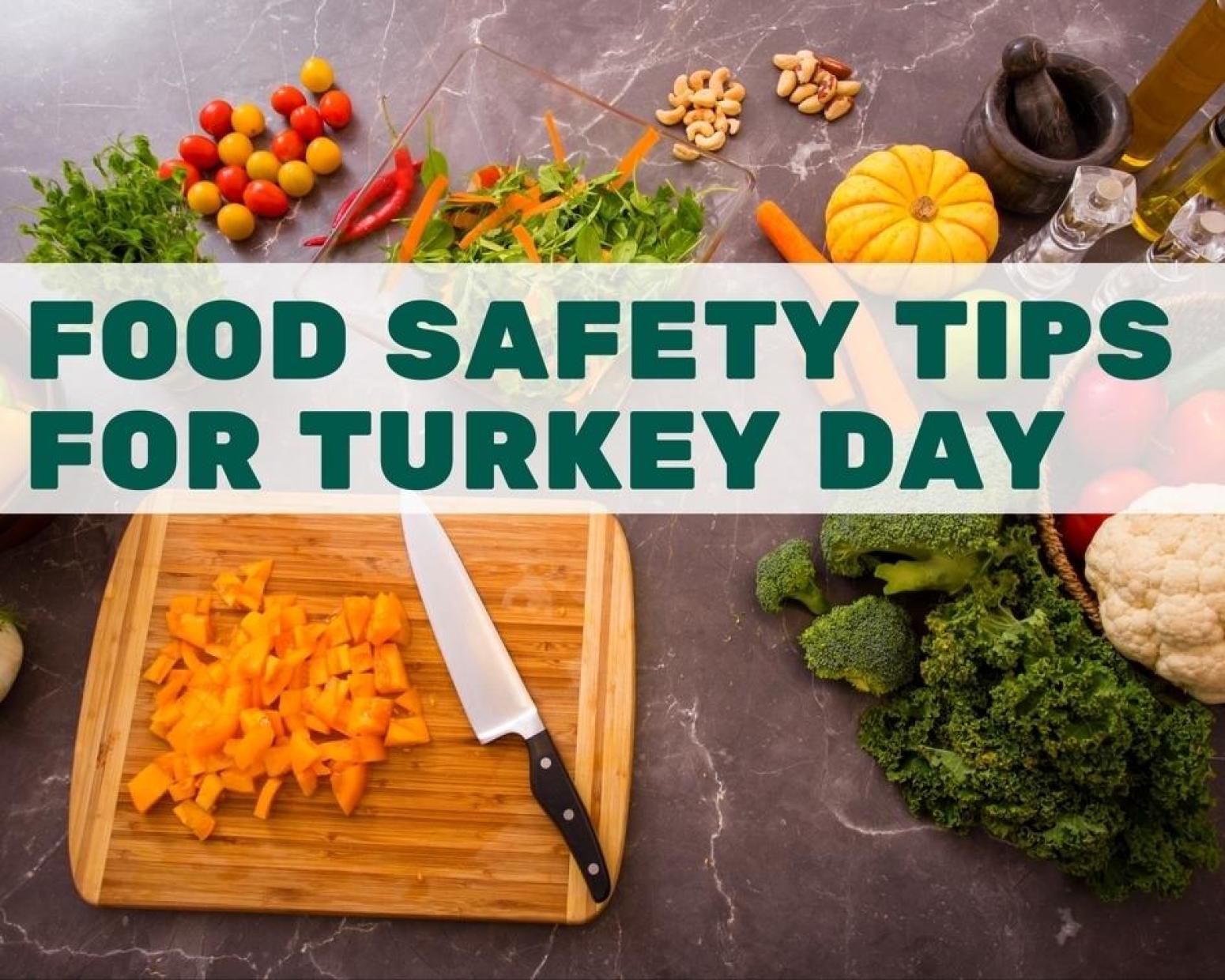The last thing you want on your holiday is a house full of sick guests.
According to the CDC, Clostridium perfringens is the second most common bacterial cause of food poisoning. Outbreaks occur most often in November and December. Meat and poultry accounted for 92% of outbreaks with an identified single food source.
Take these precautions to ensure a safe holiday:
1. Shop close to Thanksgiving
When picking up ingredients for the feast, shop as close to the day as possible. Avoid stopping anywhere after purchasing the food, go straight home and place what needs to be refrigerated in the refrigerator.
2. Safely defrost the turkey.
The ideal and safest way, as recommended by the USDA is to defrost a turkey by letting it thaw in the refrigerator. According to foodsafety.gov, every 4-5 lbs will require 1 day of defrosting. The second way is to fully submerge the turkey in cold water, which requires about 30 minutes per pound of turkey. You will need to change the water every 30 minutes. The last option is to defrost in the microwave following the manufacturer specifications. You must cook the turkey immediately after thawing in the microwave as some areas of the food will become warm, providing an environment for bacteria growth. Do not let the turkey defrost on the counter or in hot water. This promotes the growth of bacteria and could result in foodborne illness.
3. Do not wash the turkey.
Previously it was common practice to wash raw poultry. Recent studies have shown that this does not decrease the presence of bacteria. Washing raw poultry promotes the spread of bacteria and increases the likelihood of cross contamination.
4. Wash hands frequently.
Remember to wash hands before and after handling raw poultry. Avoid cross-contaminating by rinsing food-contact surfaces (cutting boards, dishes, plates, utensils, and counters) with hot, soapy water before using them to prepare another item.
5. Use separate cutting boards.
Even better, use separate cutting boards for poultry, dairy, meat, and produce. Color coded sets are available to help make the process easier.
6. Do not stuff the turkey ahead of time.
Stuff the turkey right before it goes in the oven. Use a thermometer to ensure both turkey and stuffing reach 165F to ensure bacteria has been killed.
7. Don’t overstuff the turkey.
Stick to about a ¾ cup of moist stuffing per pound of turkey.
8. Fully cook eggs.
Fully cook eggs and use pasteurized eggs (such as Davidsons) for recipes where raw eggs are used (such as eggnog, sunny side up eggs, hollandaise sauce, homemade mayo, etc).
9. Wash produce.
Remember to full wash all produce unless it is bought triple washed.
10. Remove aluminum from baked potatoes.
If using aluminum to bake potatoes, remove the aluminum as soon as it’s done baking. Wrapping them in foil removes oxygen, which is the perfect environment for Clostridium. If left in the foil they will grow as the potato cools. Remove the foil right away and do not store the potato in the fridge with aluminum.
11. Regulate refrigerator temperature.
Set refrigerator to 40F and freezer to 0F. Use a thermometer to monitor the temperature. With a lot of people in the house and the doors to the refrigerator and freezer opening more frequently the temperature may need to be lowered.
12. Refrigerate leftovers.
Refrigerate leftovers at 40°F or below as soon as possible and within two hours of preparation.
13. Cut meat into smaller portions.
Cut pieces of meat into smaller portions before refrigerating, this will allow them to cool faster and prevent the growth of bacteria.
14. Don’t keep leftovers too long.
Leftovers are good for 4 days in the fridge and for 3-4 months in the freezer.
15. Reheat leftovers properly.
Reheat all leftovers to 165F, ideally, ensure sauces come to a boil before serving again.
If you are overwhelmed, maybe print this one and hang it on the fridge for quick reference to ensure a safe and fun holiday!
